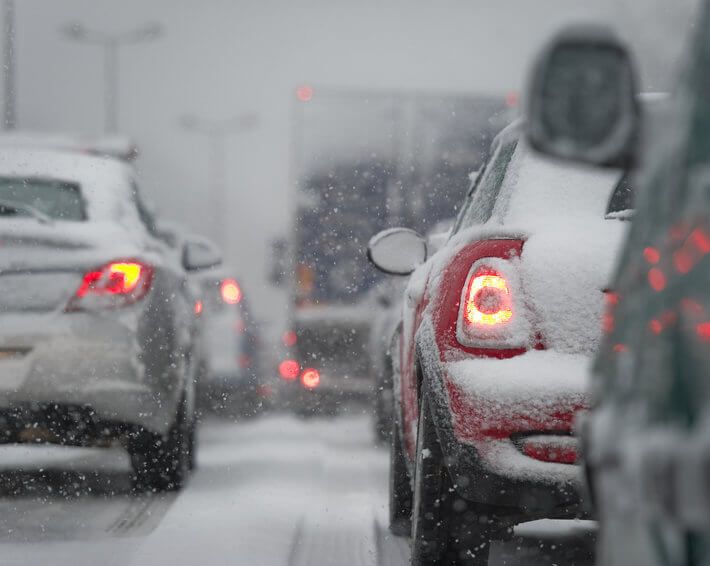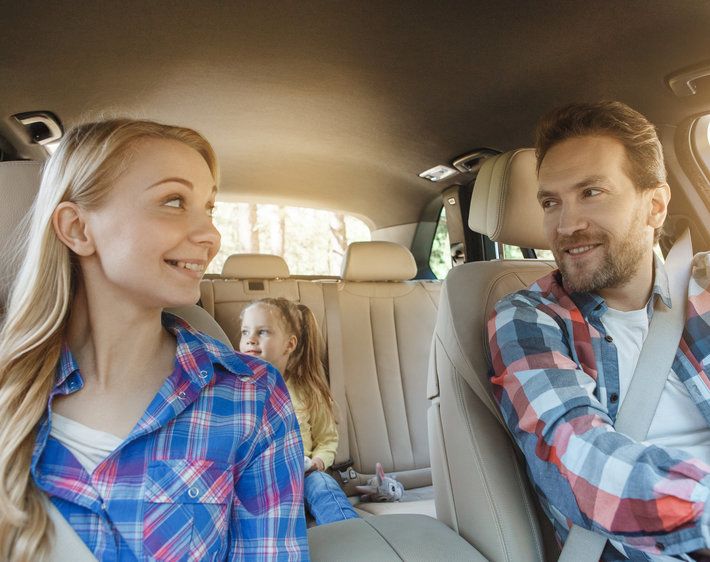You pull up to the bank, but there are no open parking spots. You're already in a hurry, so you double park and turn on your hazard lights. Good use of hazard lights, or bad? It's time to find out! Your car's hazard lights can communicate with other drivers in a flash, however, there are right and wrong times to use them. To help you stay safe and legal on the road, we’ve highlighted some scenarios where you should avoid using them, other instances when it’s probably the right thing to do, and the general hazard light laws by state.
Avoid using your car's hazard lights when:
- Driving in bad weather. With your hazards on and rain or snow already blurring road visibility, other drivers may not be able to tell which lane you're in or if you're changing lanes. Turn on your headlights and taillights in inclement weather instead. If the weather is bad enough that you feel hazard lights are truly necessary, pull off the road and stop until conditions improve.
- Driving in heavy traffic. While your hazards can make you more visible, they can also make it challenging for other drivers to anticipate what you're doing and where you're headed, since turn signals are disabled when hazards are activated in some cars.
- Parking illegally. Parking illegally is never a good idea. But if you do park illegally...turning on your hazard lights doesn't make it legal. Keep driving until you find an appropriate parking spot and won't be blocking traffic.
- A turn signal will do the job. If you're slowing down to exit the highway due to an unexpected problem, think twice before using your hazards. As we mentioned before, turn signals are generally disabled when your flashers are on. That can make it difficult for other drivers to know where you're going and could result in a crash.
Consider using your car's hazard lights when:
- Getting pulled over. If law enforcement signals you to pull over, turning on your hazard lights can show the officer that you acknowledge their signal and are following the request. Slow down, turn on your hazard lights, and stop your car in a safe location.
- Changing a tire on the side of the road. Use your hazard lights when your vehicle becomes a potential hazard for other road users. If you're parked on the side of the road changing a tire, it's generally okay to have your hazards on.
- Your car has broken down and you're waiting for a tow. Your car has become a temporary hazard and you're waiting for assistance. Warn other drivers of your presence, especially if you are not able to move your car out of traffic.
- Driving in a funeral procession. Funeral processions are an exception to most hazard light guidelines. It's customary for vehicles in a funeral procession to drive with their hazard lights on, even when it is otherwise prohibited by law.
Know the hazard light laws in your state.
Hazard light laws differ across the U.S. In some states, it's acceptable to use your hazard lights while driving. In others, it's only okay to turn on your hazard lights while driving if "the vehicle speed is 25 mph or less," like in Colorado, or "to indicate a traffic hazard," like in California. Below is a brief list of hazard light laws by state per AAA, but make sure to review your state's specific laws and guidelines before making any assumptions.
| Use of hazard lights is generally permitted while driving | Use of hazard lights is NOT permitted while driving | Use of hazard lights is NOT permitted while driving, except in emergency or other specified scenarios |
|---|---|---|
| Alabama | Alaska | Arizona |
| Connecticut | Florida | Arkansas |
| Georgia | Hawaii | California |
| Kentucky | Illinois | Colorado |
| Michigan | Kansas | Delaware |
| Mississippi | Louisiana | Idaho |
| Missouri | Massachusetts | Illinois |
| Nebraska | Nevada | Iowa |
| New Hampshire | New Mexico | Minnesota |
| New Jersey | Rhode Island | Maine |
| New York | Tennessee | Maryland |
| North Carolina | Wyoming | Montana |
| North Dakota | Puerto Rico | Ohio |
| Oregon | Oklahoma | |
| Pennsylvania | Virginia | |
| South Carolina | Washington | |
| South Dakota | West Virginia | |
| Texas | Wisconsin | |
| Utah | ||
| Vermont |
Even with your hazards on, stopping your car near traffic can be dangerous. Anything you can do to prevent having to pull over in the first place is worth considering. Keep your vehicle well maintained and consider investing in a set of run-flat tires, like DriveGuard. You'll be able to drive to a safe stopping point even with a complete flat, so you won't need to wait for a tow or try to change a flat tire on your own. Visit your local Firestone Complete Auto Care to learn more about new tire technology that can keep you on the road, safer and longer.



